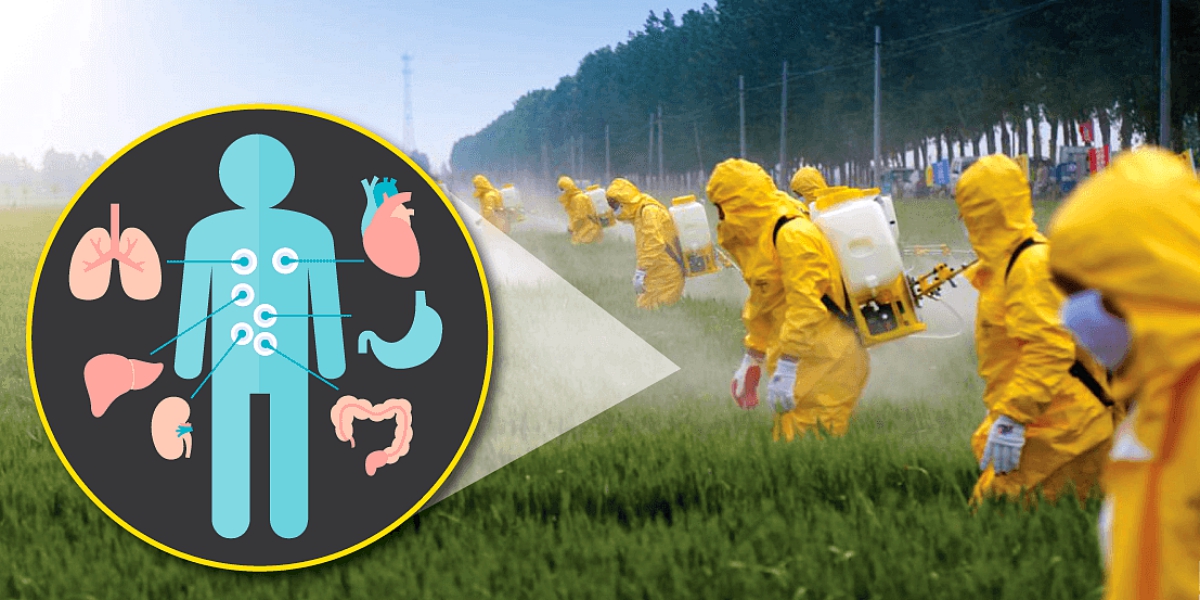There’s a little bit of glyphosate in everyone’s body. Glyphosate’s weed-killing properties were accidentally discovered 20 years after the chemical was first synthesised. Today, it is omnipresent across the world. The WHO says it causes cancer and studies link it to many diseases. Countries have been struggling to ban or restrict its use due to pressure from the industry and farmer groups. But a new movement to ban this chemical as well as to find alternatives is gaining ground.
What is glyphosate?
Glyphosate is a herbicide. It is applied to the leaves of plants to kill both broadleaf plants and grasses. The sodium salt form of glyphosate is used to regulate plant growth and ripen specific crops.
Glyphosate was first registered for use in the U.S. in 1974. Glyphosate is one of the most widely used herbicides in the United States. People apply it in agriculture and forestry, on lawns and gardens, and for weeds in industrial areas. Some products containing glyphosate control aquatic plants.
What are some products that contain glyphosate?
Glyphosate comes in many forms, including acid and several salts. These can be either solids or an amber-coloured liquid. There are over 750 products containing glyphosate for sale in the United States.
How does glyphosate work?
Glyphosate is a non-selective herbicide, meaning it will kill most plants. It prevents the plants from making certain proteins that are needed for plant growth. Glyphosate stops a specific enzyme pathway, the shikimic acid pathway. The shikimic acid pathway is necessary for plants and some microorganisms.
How might I be exposed to glyphosate?
You can be exposed to glyphosate if you get it on your skin, in your eyes or breathe it in when you are using it. You might swallow some glyphosate if you eat or smoke after applying it without washing your hands first. You may also be exposed if you touch plants that are still wet with spray. Glyphosate isn’t likely to vaporize after it is sprayed.
What are some signs and symptoms from a brief exposure to glyphosate?
Pure glyphosate is low in toxicity, but products usually contain other ingredients that help the glyphosate get into the plants. The other ingredients in the product can make the product more toxic. Products containing glyphosate may cause eye or skin irritation. People who breathed in spray mist from products containing glyphosate felt irritation in their nose and throat. Swallowing products with glyphosate can cause increased saliva, burns in the mouth and throat, nausea, vomiting, and diarrhoea. Fatalities have been reported in cases of intentional ingestion.
What happens to glyphosate when it enters the body?
In humans, glyphosate does not easily pass through the skin. Glyphosate that is absorbed or ingested will pass through the body relatively quickly. The vast majority of glyphosate leaves the body in urine and faeces without being changed into another chemical.
Is glyphosate likely to contribute to the development of cancer?
Animal and human studies were evaluated by regulatory agencies in the USA, Canada, Japan, Australia, and the European Union, as well as the Joint Meeting on Pesticide Residues of the United Nations and World Health Organization (WHO). The committee of scientists working for the International Agency for Research on Cancer of the WHO reports that glyphosate is carcinogenic.


















Discussion about this post